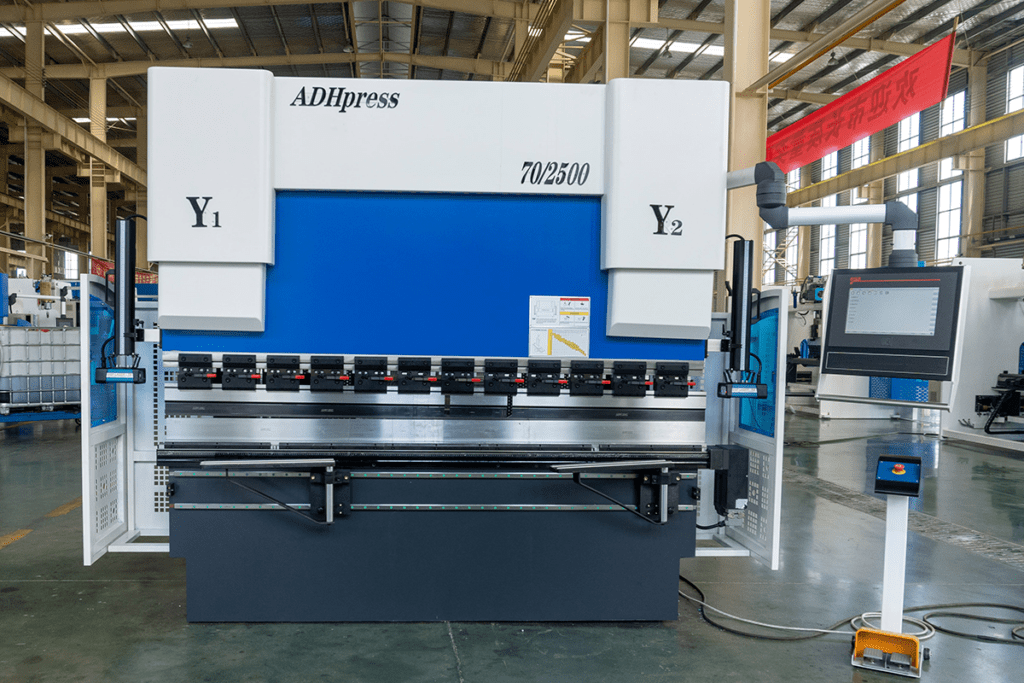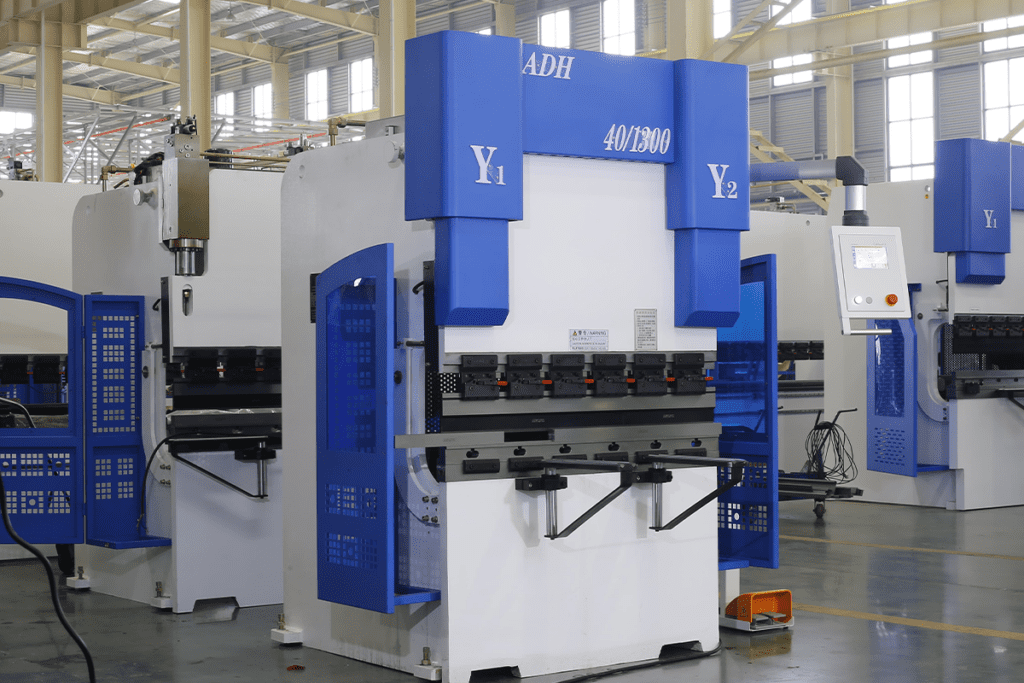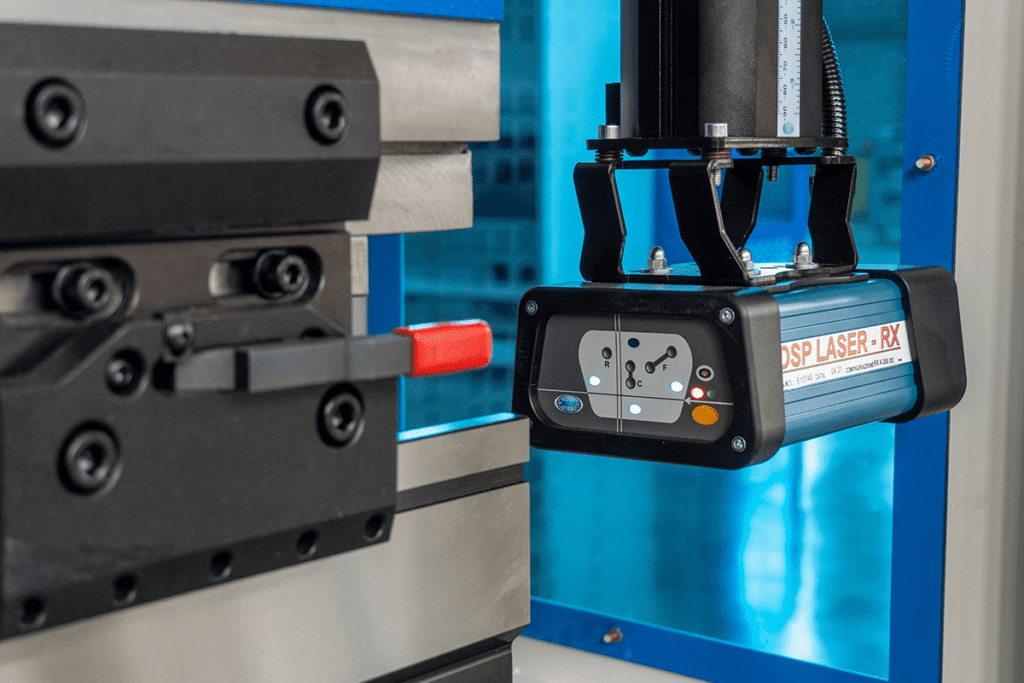I. Introduction to Press Braking
In the vast world of metal fabrication, various techniques and processes are employed to shape, mold, and transform metals into functional and aesthetic pieces. Among these techniques, one stands out for its precision, versatility, and widespread use: press braking.
The press braking process is commonly used for shaping and bending sheets and plates in metal sheet manufacture.
It has been adopted in numerous industries, such as manufacturing, automotive, aerospace, and construction.
This process is concerned with a machine called a press brake, which is made up of punches and dies, and forms a specific angle through exerting pressure on the workpiece to bend it.
Sheets and plates are placed between the punch and die and can be shaped and bent via pressure exerting.
The punch exerts pressure on the workpiece, forces it to bend, and takes the shape of a die.
By adjusting the position of the punch and die, the bending angle and length can be controlled.
Compared with other metal forming methods, the press braking process has the following advantages.
It can bend metals precisely and repeatedly and can be applied to produce components with exact size.
It can handle various sheets’ thicknesses and sizes. The process is flexible and can make both simple and complex bending shapes.
The press braking is used to produce assorts of components, such as brackets, enclosures, frames, panels, and structural parts.
It is highly efficient, economical, and used to generate mass metal parts with high accuracy and consistency.
Whether you are experienced or have a green hand, it is of vital importance for you to know the press braking process to acquire precise and high-quality results.
In this blog post, we will unveil the mystery press braking process.
II. Components of Press Brake Machine
The press brake basically comprises a bed, ram, top punch, bottom die, and back gauge.
The bed and ram are essential for the press brake, which supports the whole machine structure and offers the stability and power required by the punching process.
The top punch is the ultimate tool of the press brake to exert pressure and form the workpiece.
The bottom die is a bottom tool for supporting the workpiece and punching the shape.
The back gauge is an essential assistant device for the press brake, which plays a role in positioning and supporting the workpiece and ensuring precision and consistency during the punching process.
By collaborating with these components, the press brake can accomplish various punching tasks and be widely applied to metal fabrication and manufacturing industries.

III. Press Braking Process
The choice of press brake: choose the proper press brake suitable for manufacturing the size and thickness of the metal sheet. Press brake has many dimensions and tonnages to meet the different bending requirements.
Machine setting:Â the press brake comprises a smooth surface (bed) and a top component (punch) pressing the metal downward to the bed. The exact point of metal bending is determined by used tools, including punch (top tool) and die (bottom tool). The operator chooses the devices via the required bending angle and shaped materials.
Material preparation: cut the metal sheet into the required size, and remove the burrs and sharp edges, which may affect the bending process.
Workpiece positioning: put the metal sheet on the press brake bed between the punch and die, then align it with the back gauge and reference point to ensure accurate bending.
Tooling adjustment:Â adjust the position and alignment of the punch and die to match the required bending angle and material thickness, which ensures the proper bending force and eliminates any potential risks.
Programming:Â if the press brake is equipped with CNC, the required bending sequence should be programmed, including bending angle, bending length and tooling parameters. This process can achieve precise and consistent bending.
Bending process:Â start the press brake, press the punch down on the metal sheet, and press it towards the tooling. The bending forces generated by the machine exceed the yield strength of the material, resulting in plastic deformation and forming the desired shape. The depth of the punch drop determines the bending angle.
Releasing:Â once the desired bend is achieved, the punch is retracted, and the bent piece of metal is removed from the machine.
Repeat multiple bends: if the workpiece requires multiple bending, the operator will reposition the metal and repeat the bending process according to needs.
Checking and quality control:Â check the molded parts' size accuracy, angle, and deflection. If deviations are found, please adjust the tools and machine settings necessarily.
Finishing operations:Â after bending, the molded parts can be dealt with with other operations according to specific requirements of the programs, such as trimming, deburring, welding, or surface finishing.

IV. Key Factors to Consider
Material type: different metals (like aluminum, steel, and stainless steel) feature different bending characteristics.
Material thickness: thicker material requires more force to bend and may need a more giant and solid machine.
Bending angle and radius:Â these all depend on the choice of punch and die and the depth of punch pressing into the die.
Grain orientation: metal has grain structure, and cross-grain bending may produce different characteristics than along-grain bending.
Rebounce: when the bending force is removed, the metal tends to return to its original shape slightly. This phenomenon is called rebounce, which needs to be considered to get an accurate bending angle.
V. Safety in Press Braking
Firstly, the operator must wear the proper protective device, including a safety cap, eye goggles, earbuds, gloves, protective suits, etc. These pieces of equipment can protect the operator from accident injuries, like metal slice splashing and the influence of the noise.
Secondly, the operator must obey the safety operation regulations. Before using the press brake, relevant training must be accepted to know the machine's working principle and operation requirements. The operator should know how to set the machine parameters and place and clamp the workpiece safely. Moreover, they should see the safety restrictions and warning signals and follow the instructions in the operating manual.
At last, emergency procedures should be regulated in case of emergencies to ensure the device can be closed safely. The emergency contains machine failure, a workpiece stuck, or an operator hurt. In these situations, the operator should take measures immediately, such as pressing an emergent button, cutting off the power, or seeking help. All the operators should be familiar with these emergent procedures and participate in regular exercise and training, thus ensuring they can handle various emergent situations.

VI. Applications and Industries
The press brake is a testament to the blend of precision engineering and raw power in metal fabrication.
This versatile tool, which meticulously bends sheet metal into desired shapes, is helpful in many industries.
From the sleek curves of a car's body to the robust frames of aircraft and the elegant furniture designs, press brakes play a pivotal role in bringing visions to life.
Automotive Industry
In the automotive sector, press brakes are indispensable. The intricate designs of vehicles, from the aesthetic curves of luxury cars to the rugged bends of trucks, owe their existence to the precision of press brakes. Whether it's the car's body, chassis, or even smaller components like door frames and bumpers, press brakes ensure that each piece fits perfectly, contributing to the vehicle's functionality and aesthetic appeal.
Aviation Sector
With its stringent safety and precision requirements, the aviation industry heavily relies on press brakes. Aircraft frames, wing components, and even the interior cabin structures are crafted with the help of press brakes. The tool's ability to work with various metal alloys, combined with its precision, ensures that aircraft components are both lightweight and durable, meeting the rigorous demands of the aviation sector.
Furniture Manufacturing
The furniture world, where aesthetics meet functionality, also benefits from press breaks. Modern metal furniture, whether the sleek framework of a glass-top table or the intricate designs of metal chairs, is shaped using press brakes. The tool's versatility allows for both traditional methods and avant-garde creations, catering to various consumer preferences.
Small Parts vs. Long Pieces
One of the standout features of press brakes is their adaptability in handling different sizes of workpieces.
Small Parts Production: For industries that require the fabrication of smaller components, press brakes can be adjusted to handle delicate operations. These might include crafting electronics components, creating small home appliance fixtures, or even producing intricate jewelry pieces. The precision of modern press brakes ensures that even the tiniest parts are crafted to perfection.
Long Pieces Production: On the other end of the spectrum, press brakes are equally adept at handling long metal sheets. This capability is crucial for industries like construction, where long metal beams, channels, and other structural components are required. The ability of press brakes to produce long, consistent bends ensures the structural integrity and consistency of these components.
VII. Conclusion
Nowadays, with the constant development of the manufacture, the press brake technology is also constantly achieving progress.
The appearance of the new material and increased precision improvement make the press brake deal with more complex and diverse workpieces.
Also, the application of automation and digital technology makes the press brake operation more efficient and intelligent.
If you are looking for an effective solution for producing components and parts quickly and precisely, the press brake may be the one you desire!
ADH machine tool boosts over 40 years of experience in press brake manufacturing. You can browse our product to get detailed information or contact our sales.

Download the Infographic With High Resolution
Crown Series Magnetic Control Metal Skincare Window Films
Heat Insulation,Anti Aging,Anti Yellowing,High Definition,Wear Resistance
Jiangsu Yaosheng New Materials Co.,Ltd , https://www.yscarfilm.com